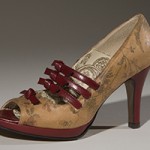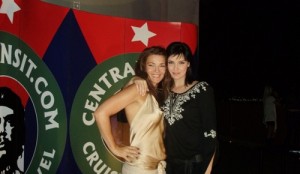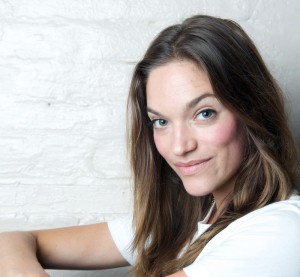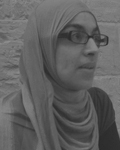VANCOUVER ECO FASHION SHOW 2010
 The world knows by now, that going green isn’t a trend and it’s definitely not going away anytime soon. Fifty plus years ago, it was the pipe dream of hippies and environmentalists everywhere that major corporations, industries and citizens would begin to adapt a green lifestyle. Albeit some are controversial (not everyone loves bike lanes) but there is a clear green movement in many facets of our lives – one area being in fashion.
The world knows by now, that going green isn’t a trend and it’s definitely not going away anytime soon. Fifty plus years ago, it was the pipe dream of hippies and environmentalists everywhere that major corporations, industries and citizens would begin to adapt a green lifestyle. Albeit some are controversial (not everyone loves bike lanes) but there is a clear green movement in many facets of our lives – one area being in fashion.
Eco Fashion Week brings the together the best eco-designers from around the world to showcase their latest collections of environmentally friendly, trend-setting fashions. Gone are the times when eco-friendly clothing equates to Birkenstocks and khakis. Local gem Nicole Bridger is an eco-designer making it big, showing in New York during fashion week and being recognized on an international level for her talents. She shows tonight (8:30 pm) at Creekside Community Recreation Centre – an eco-friendly, LEED-certified venue if I may add. Closing party featuring K-OS. The industry-driven event also includes a trade show where 20 other eco-friendly businesses can make connections with buyers, including designers. But what set this week’s events apart from other fashion weeks is the speakers. Climate change expert and 2008 Nobel Prize winner Dr. Andrew Weaver gave the keynote address. Carly Stojsic from WGSN, a leading online trend-analysis and research service for the apparel industries, discussed sustainability as a movement and not simply a passing trend.
“I think that sustainability is definitely at the forefront of not only designers, but probably some of the biggest corporations’ agendas right now,” Stojsic said in an interview. “When it gets to that level you are not just talking about a trend of something that looks like it is environmentally friendly, but something that is more of a movement where it changes the way people are thinking and behaving and even treating all the products that they use in their lives.” Mark Trotzuk, CEO of the Vancouver-based Boardroom ECO Apparel and Paul Raybin, of Airdye, discussed the life cycle of a garment. Raybin’s New York-based company created a method of dyeing fabrics without water. Everything Trotzuc produces has been certified by Blue Sign Standards, an independent assessment tool that certifies that the entire production chain from raw material to final product is sustainable. Source Refs/Karen Gram,Vancouver Sun&VanCity Buzz
NEW YORK CITY – THE GREEN SHOWS
Griffin and Eco Fashion Label Prophetik Create Sustainable Tech Fashion
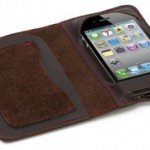 Nashville, TN/London, UK — September 17, 2010 — Griffin Technology Inc., maker of ingenious ways to power, play, protect, and connect, today announced a partnership with Prophetik, a sustainable fashion design house founded by Tennessee-bred designer Jeff Garner. The Griffin + Prophetik Co-Op Initiative features hand-made accessories for iPhone that focus on quality, sustainability, and timeless style. Garner’s work, which has been recognized internationally for incorporating environmental sustainability into its designs, was featured today at Prophetik’s London Fashion Week catwalk show, along with the first Griffin + Prophetik piece: Folio for iPhone.
Nashville, TN/London, UK — September 17, 2010 — Griffin Technology Inc., maker of ingenious ways to power, play, protect, and connect, today announced a partnership with Prophetik, a sustainable fashion design house founded by Tennessee-bred designer Jeff Garner. The Griffin + Prophetik Co-Op Initiative features hand-made accessories for iPhone that focus on quality, sustainability, and timeless style. Garner’s work, which has been recognized internationally for incorporating environmental sustainability into its designs, was featured today at Prophetik’s London Fashion Week catwalk show, along with the first Griffin + Prophetik piece: Folio for iPhone.
“Because Griffin is a Nashville-based company, we’re in close proximity to some very creative and talented artists,” said Mark Rowan, President of Griffin Technology. “Prophetik is a strong and unique vision in our local community, as well as around the world, and a perfect partner for Griffin.”
“Technology is the future, as is sustainability, so being able to use the medium of fashion design through a unique, hand-made accessory perfectly fuses the way consumers and industry should be forward thinking. Griffin is the ideal platform for spreading the message, and Prophetik is thrilled with the outcome,” adds Prophetik’s Jeff Garner.
Griffin + Prophetik is a new Co-Op Initiative driven by the philosophy of permanence in a time of change; quality in a time of quantity. Design guided by history in an environment driven by what’s next — of reuse and repurposing in an economy driven by consumption.
Ecofashion designer Eviana Hartman-by Starre Vartan · 09/09/10 Whether you want to call it classic, travel-ready, or just plain fiscally responsible, choosing clothes that will last you for years is the smart (and ecofriendly) way to dress. German label Hessnatur specializes in basics made with high quality fabrics, all of which are sustainably grown and/or produced by people who are paid a fair wage.
They relaunched the brand a couple years back when they brought reknowned designer Miguel Adrover on as lead designer, and now they’ve gotten Eviana Hartman, who designs her own line, Bodkin , to create a collection-within-a-collection for them for Autumn, 2010 (and moving into the future). Check out the video for a close look at the collection, shown by Eviana.
Why is Eco – Fashion so hot?
By Larry West, About.com Guide – photo Joann Berman
Simply put, the term “eco-fashion” refers to stylized clothing that uses environmentally sensitive fabrics and responsible production techniques.The nonprofit Sustainable Technology Education Project(STEP) defines eco-fashions as clothes “that take into account the environment, the health of consumers and the working conditions of people in the fashion industry.”
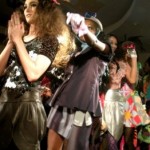 Clothes and accessories that meet such criteria are usually made using organic raw materials, such as cotton grown without pesticides, or re-used materials such as recycled plastic from old soda bottles. Eco-fashions don’t involve the use of harmful chemicals and bleaches to color fabrics—and are made by people earning fair wages in healthy working conditions.
Clothes and accessories that meet such criteria are usually made using organic raw materials, such as cotton grown without pesticides, or re-used materials such as recycled plastic from old soda bottles. Eco-fashions don’t involve the use of harmful chemicals and bleaches to color fabrics—and are made by people earning fair wages in healthy working conditions.
Eco-Fashions Debut at Fashion Week in New York Designers have been playing around with organic and natural fibers for years, but so-called “eco-fashions” had their coming out party at New York City’s famed Fashion Week in February 2005 when the nonprofit EarthPledge teamed up with upscale clothing retailer Barneys to sponsor a special runway event called FutureFashion.
At the event, famous and up-and-coming designers showcased outfits made from eco-friendly fabrics and materials including hemp, recycled poly and bamboo. Barneys was so enthused that it featured some of the environmentally sensitive designs in its window displays for several weeks following the event, imparting a unique mystique to this emerging green subset of the fashion world.
Top Designers Embrace Eco-Friendly Fabrics One of the highlights of FutureFashion was a stunning pink-and-yellow skirt made from corn fiber by uber-cool Heatherette designer Richie Rich.
“It’s definitely something we’re going to continue toying with,” Rich told reporters. “People often perceive the fashion world as superficial, so it’s great to work with materials that are actually good for the environment. I had my doubts, but when we actually saw the fabric swatches we were blown away. They were gorgeous, and it wasn’t hard to design with them.”
Eco-fashion Movement Heads West The party moved to the West Coast in June 2005 when San Francisco culminated its World Environment Day celebration with “Catwalk on the Wild Side,” an eco-chic fashion show sponsored by the nonprofit Wildlife Works featuring top models and designs from the likes of EcoGanik, Loomstate, Fabuloid and others.
One of the pioneers of the emerging eco-fashion movement is designer Linda Loudermilk. Her “luxury eco” line of clothing and accessories uses sustainably produced materials made from exotic plants including bamboo, sea cell, soya and sasawashi. The latter is a linen-like fabric made from a Japanese leaf that contains anti-allergen and anti-bacterial properties. Loudermilk also incorporates natural themes in each season’s line—her most recent one being an oceanic motif.
“We aim to give eco glamour legs, a fabulous look and a slammin’ attitude that stops traffic and shouts the message: eco can be edgy, loud, fun, playful, feminine (or not) and hyper-cool,” Loudermilk says.
The Museum at FIT presents Eco-Fashion: Going Green
 Read about Eco-Fashion: Going Green
Read about Eco-Fashion: Going Green
Fashion & Textile History Gallery – Until – November 13, 2010
The Museum at FIT presents Eco-Fashion: Going Green, an exhibition exploring the evolution of the fashion industry’s multifaceted and complex relationship with the environment. By examining the past two centuries of fashion’s good—and bad—environmental and ethical practices, Eco-Fashion: Going Green provides historical context for today’s eco-fashion movement.
 Emma Watson launching eco-fashion
Emma Watson launching eco-fashion
London Evening Standard reports that Harry Potter’s Emma Watson has a new collection of ecologically sound fashion that will debut at Prince Charles’s Garden Party To Make A Difference. The event is a 12-day festival in London during September that aims to give people of all ages a fun day out while at the same time demonstrating the “small steps that can, and are, being taken by all of us, interested in building a more sustainable future.” The 20-year-old actress is the latest big-name backer for the event and will show the clothes she has helped design for fair trade fashion company People Tree.
Eco party
CenTransit, the travel portal based in Bulgaria, organised an Eco fashion
Greta Eagan of FashionmeGreen
An interview with Greta Eagan of FashionmeGreen
Interview with Egyptian Eco-Fashion Designer
Nadia Nour
by Arwa Aburawa
Since her launch in 2008, Egyptian fashion designer Nadia Nour has been wowing fashionistas with her elegantly glamorous and individual fashion range which also happen to be environmentally-friendly. Graduating with a degree in Fashion and Philosophy, it’s seems that Nadia Nour was destined to create an ethical fashion range that gracefully combines her love for fashion with concerns for the planet. With a focus on organic cotton, silks and vintage fabrics, Nadia has also shown her commitment to her home city by producing locally in New York City’s Garment District. She insists that you can still wear high-end fashion, show off your personal style and reduce your carbon footprint. I spoke to Nadia about what inspires her work, her top tips for eco-shoppers and how her Arab heritage shapes her work.
What inspired you to create an environmentally-friendly clothing range?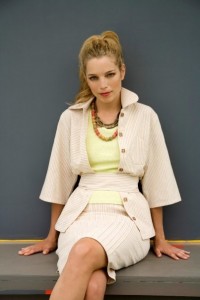 As I learned about the fashion industry’s negative impact on the environment, I realized that I did not want to be part of the problem. By producing locally in NYC, I am reducing emissions caused by transportation as well as helping to sustain the local economy and maintain manufacturing jobs through my support of the NY Garment District. My organic fabrics are dyed with all natural ingredients which helps to keep toxic dyes from being flushed into our water supply. My organic cottons are also grown without the use of pesticides which is not only healthier for people and the planet, but also makes for a softer and more durable fabric.
As I learned about the fashion industry’s negative impact on the environment, I realized that I did not want to be part of the problem. By producing locally in NYC, I am reducing emissions caused by transportation as well as helping to sustain the local economy and maintain manufacturing jobs through my support of the NY Garment District. My organic fabrics are dyed with all natural ingredients which helps to keep toxic dyes from being flushed into our water supply. My organic cottons are also grown without the use of pesticides which is not only healthier for people and the planet, but also makes for a softer and more durable fabric.
Although you use natural and organic materials and dyes, your range of clothing is very sophisticated and glamourous. Was this a conscious decision? Definitely, my goal is to design clothes that are beautiful and that are also organic. Women do not have to sacrifice style to be green. What do you think is going to be the next big thing in Eco-Fashion? I think we will continue to see an expanding variety of organic fabrics and collections.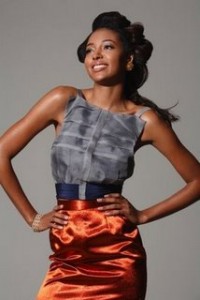 Does your Arab heritage influence your work? Yes, I am inspired by the rich colors and beautiful geometric designs found throughout the Arab world. The idea of world traveling and cross-cultural influence inspires much of work. What eco designers do you admire? Karim Rashid is inspiring in his approach to lifestyle design and his environmentally-conscious methods. Any advice or top tips to offer the fashion conscious eco warrior? Read your labels and do your homework. I think the organic fashion movement should follow the example of the organic food movement. People educated themselves about the ingredients and manufacturing of their food and as awareness was raised, demand was created for organic food. Companies responded and today almost every grocery store in the US has an organic section. Finally, what can we expect from Nadia Nour in the future? I am developing initial plans for expanding my line to include accessories and jewellery. Stay tuned for more on Nadia Nour’s range of eco accessories and jewellery to go with her certified organic, lovely and sustainable clothing.
Does your Arab heritage influence your work? Yes, I am inspired by the rich colors and beautiful geometric designs found throughout the Arab world. The idea of world traveling and cross-cultural influence inspires much of work. What eco designers do you admire? Karim Rashid is inspiring in his approach to lifestyle design and his environmentally-conscious methods. Any advice or top tips to offer the fashion conscious eco warrior? Read your labels and do your homework. I think the organic fashion movement should follow the example of the organic food movement. People educated themselves about the ingredients and manufacturing of their food and as awareness was raised, demand was created for organic food. Companies responded and today almost every grocery store in the US has an organic section. Finally, what can we expect from Nadia Nour in the future? I am developing initial plans for expanding my line to include accessories and jewellery. Stay tuned for more on Nadia Nour’s range of eco accessories and jewellery to go with her certified organic, lovely and sustainable clothing.


